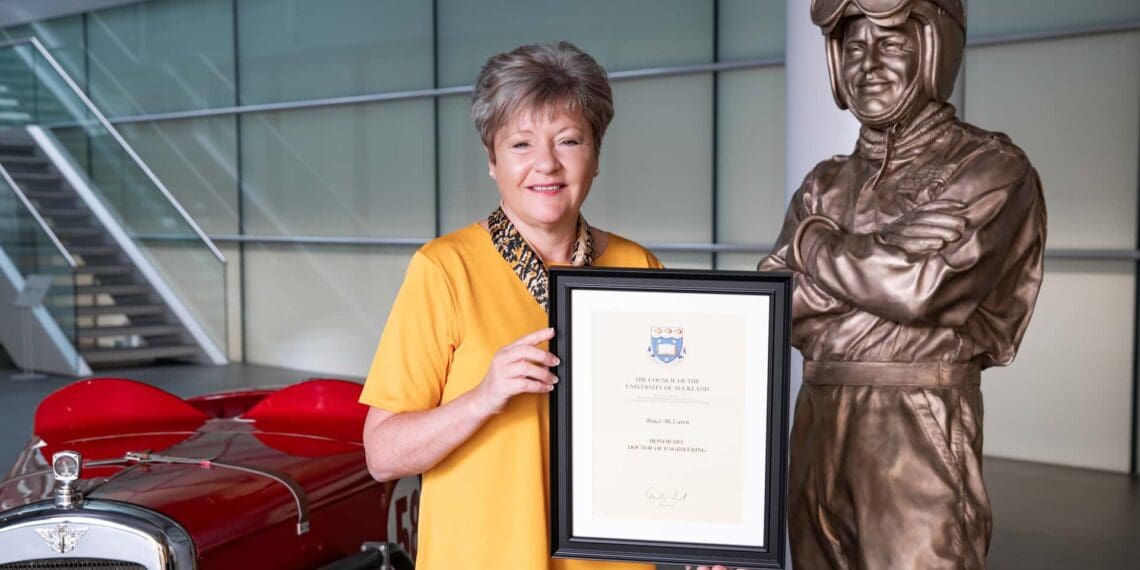Motorsport history is filled with names that have defined eras, but Bruce McLaren’s impact stands unique. The University of Auckland has conferred upon him a posthumous honorary Doctor of Engineering degree, celebrating his indelible contributions to automotive engineering and motorsport. This acknowledgment comes as McLaren, the company he founded, marks its 60th anniversary—a journey that began in the very classrooms of this New Zealand institution.
The ceremony, hosted at the state-of-the-art McLaren Technology Centre in Woking, England, served as a fitting tribute to Bruce McLaren’s legacy. His daughter, Amanda McLaren, accepted the award, expressing gratitude and acknowledging the modern advancements in engineering, especially in the realm of supercars and racing cars that continue to bear her father’s name. The degree is one of four posthumous honorary doctorates being conferred by the University of Auckland as part of its 140th-anniversary celebrations.
Bruce McLaren’s connection with the University of Auckland began when he was a student of engineering there. Later, he became the inaugural recipient of the New Zealand International Grand Prix Association’s Driver to Europe Scholarship. By the age of 22, he secured a spot in history as the youngest winner of a Formula 1 World Championship grand prix, a record unbroken for 44 years. Four years later, he founded Bruce McLaren Motor Racing Ltd, a company that initially designed, built, and raced cars in the Tasman Series in Australia and New Zealand. His prowess continued to shine in North American Can-Am Championships from 1966-1970, with Kiwi teammate Denny Hulme. His untimely passing in 1970 cut short what was already a pioneering career.
McLaren’s influence transcends the tracks and circuits of racing history. His vision has propelled the McLaren brand into a global powerhouse that produces lightweight, carbon-fibre-constructed supercars. McLaren’s participation in Formula 1, IndyCar, Formula E, Extreme E, and esports bears testament to the brand’s racing heritage and technological prowess. The degree honors not just the man but an enduring legacy that has shaped the automotive world.
The University of Auckland isn’t stopping at the honorary degree. Plans are afoot to establish the Bruce McLaren Centre for High Performance Engineering. This proposed center aims to foster Kiwi engineering excellence and focus on cutting-edge materials, advanced manufacturing, and innovative design to create a sustainable future.
Through annual Bruce McLaren engineering scholarships, the University maintains a symbiotic relationship with McLaren, offering students the chance to intern at this legendary supercar company. A recent example is Lizzy Grant, a former scholar who now works on developing battery technology for McLaren’s electrified powertrains.
This posthumous recognition by the University of Auckland beautifully encapsulates Bruce McLaren’s life—a life defined by speed, engineering marvels, and a relentless pursuit for perfection. His daughter’s words sum it up best: “I know dad would be so impressed with the engineering advancements seen in the industry today, especially in the supercars and racing cars that bear his name.” Indeed, Bruce McLaren’s spirit lives on, not just in the high-speed races or the wind tunnels of engineering labs, but in the countless innovations that continue to redefine automotive excellence.
Source: McLaren











